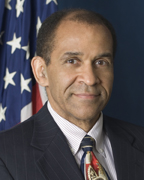 The National Transportation Safety Board released last week the agency’s 2015 Most Wanted list of transportation safety improvements, with six related to aviation.
The National Transportation Safety Board released last week the agency’s 2015 Most Wanted list of transportation safety improvements, with six related to aviation.
Last year the NTSB’s Most Wanted List prioritized identification and communication of hazardous weather in general aviation. This year, the Board is focusing on preventing loss-of-control crashes in general aviation. “The Most Wanted List is our roadmap for 2015,” said NTSB Acting Chairman Christopher A. Hart (shown at right). “We want it to be a roadmap for policy makers and legislators as well. These are safety improvements for which the time is ripe for action.”
EAA and the general aviation community are already well ahead of the curve when it comes to finding ways to reduce GA loss-of-control accidents, because of several years of progress through the FAA’s General Aviation-Joint Steering Committee working group that has studied those accidents. Sean Elliott, EAA’s vice president of advocacy and safety said EAA has been a very active member of this committee’s working group, which is focused on using verifiable data to find causes and the best ways to address the issue, while not wasting time and resources on solutions that would have only a minimal impact.
Other aviation-related items include, Disconnect from deadly distractions; End substance impairment in transportation; Enhance public helicopter safety; Require medical fitness for duty and Strengthen procedural compliance. Also on the list this year is safety of helicopters operated by local, state, and federal governments. Pilots who fly search and rescue and law enforcement missions require safer operations.
EAA co-chaired the first Loss-of-Control Working Group several years ago and has been the lead organization for implementing several of the group’s safety enhancements regarding training and outreach. Among the solutions advanced by EAA through the Loss-of-Control Working Group was the recently FAA-approved use of a test pilot for Phase 1 flight testing in amateur-built aircraft. Elliott, who serves on the GA-JSC steering committee, noted that the process being used by the GA working group is similar to the Commercial Air Safety Team (CAST) program adopted by airlines in the 1990s that greatly reduced their accident rate. The CAST program evaluates data over a longer period of time that shows trends and specific items to address through education and training.
“EAA has always believed that education is more effective than regulation, and our members have always shown themselves to be dedicating toward making themselves better pilots,” he said. “While the NTSB focus on GA loss-of-control accidents is a good reminder, the aviation community and the public should know that EAA is already part of an outstanding, substantial GA community effort toward a solution.”
Visit www.ntsb.gov/mostwanted for more details on the NTSB report.



